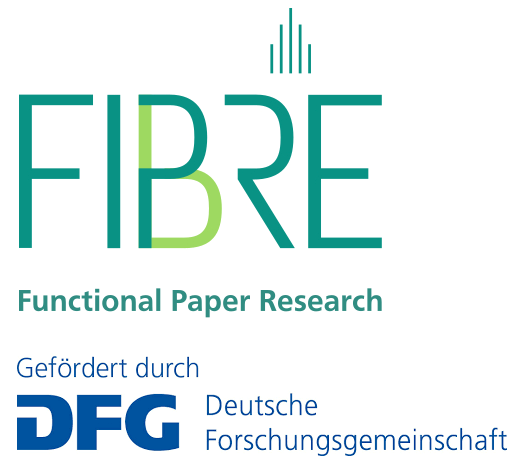Temporally and spatially resolved characterisation of pores in paper with high-resolution fluorescence microscopy
The interaction of (aqueous) liquids with paper plays a central role in the production, investigation, modification, functionalization and application of paper.
This interaction can be divided into different processes, such as (i) wetting and swelling of the cellulose fibers, (ii) capillary transport within, on or in between the fibers, or (iii) accessibility of the pores on or between the fibers for dissolved or suspended substances of different size, charge or hydrophilicity. The quantitative investigation and description of these single processes, which always occur simultaneously, as soon as paper gets in contact with liquids, are indispensable in order to gain an understanding of the complex microfluidic properties of paper.
The aim of the project is to quantify the influence of different paper parameters, such as fiber type, distribution of pore sizes or chemical functionalizations, on the behavior of liquids and the dissolved or suspended substances with high spatial and temporal resolution within the paper matrix. The exact description of these complex dynamic processes forms an important basis for later modelling and simulations of such processes. All these processes are characterized by high spatiotemporal dynamics, which take place on very different length and time scales.In order to quantify such processes, the methodological spectrum of fluorescence microscopy is particularly suitable.
Three different approaches are pursued, which differ in the type of fluorescent probe used and thus – in combination with different microscopy techniques – especially in their spatial and temporal resolution:
(i) Imbibition: Liquids, labelled with relatively high concentrations of dissolved fluorophores are detected in ensemble measurements with a time resolution of a few milliseconds as they migrate into the paper matrix, in order to obtain boundary conditions and system states for modeling and simulations.
(ii) Molecular sieve effect: The diffusion of individual molecules in the immediate vicinity of the fiber surface and their permanent or transient immobilization on fibers or within accessible pore spaces is detected by single-molecule microscopy.
(iii) Flow: The transport of liquids in microfluidic papers is examined by micro particle image velocimety (μPIV) to detect velocity profiles and flows around the paper fibers and at the boundaries of the hydrophilic zones. In addition to classical methods, such as wide-field and scanning confocal microscopy, newer fluorescence-based microscopy methods, such as light-sheet or localization microscopy are used to achieve measurements with high temporal (5 ms) and spatial resolution (30 nm).



